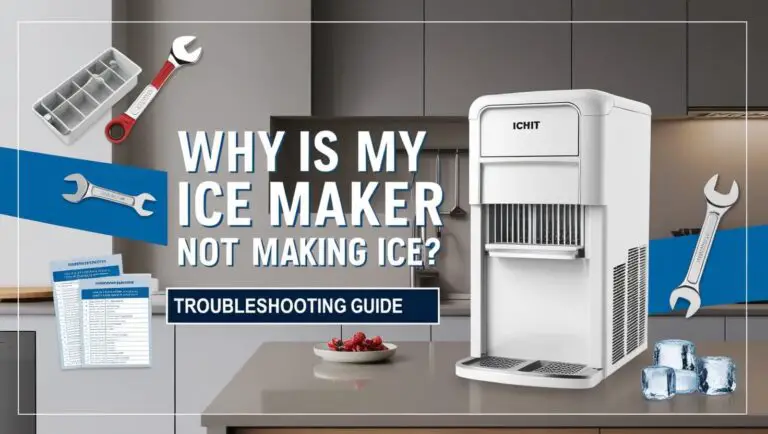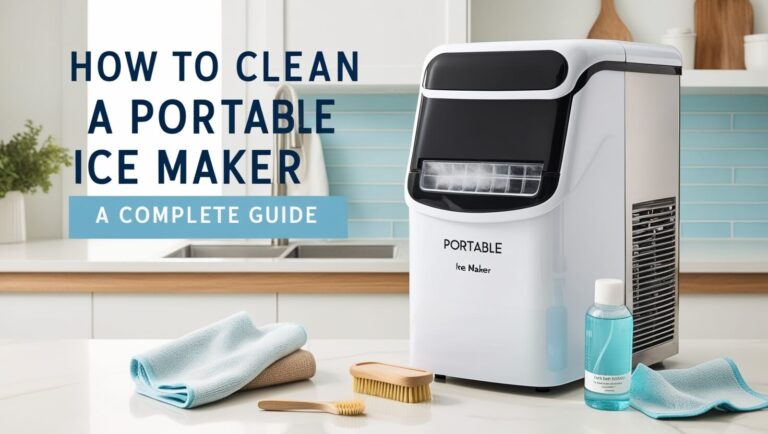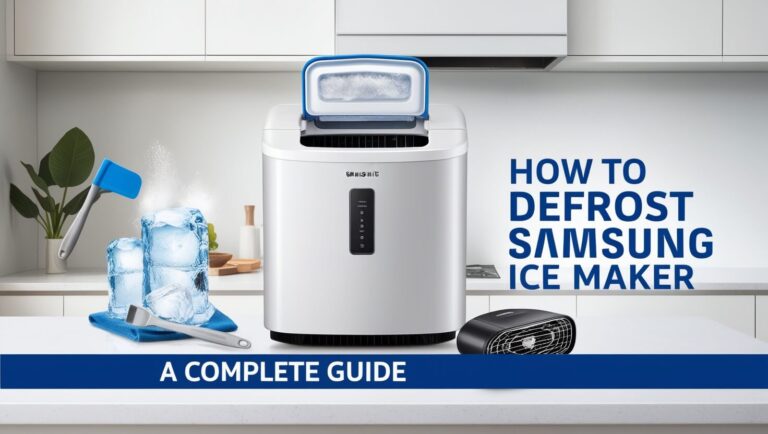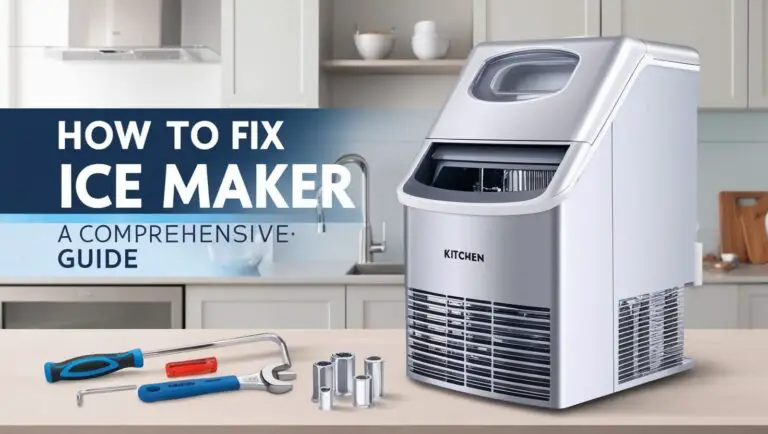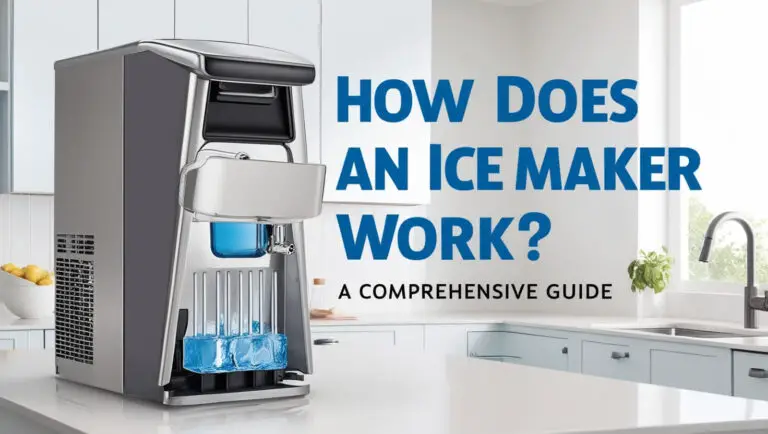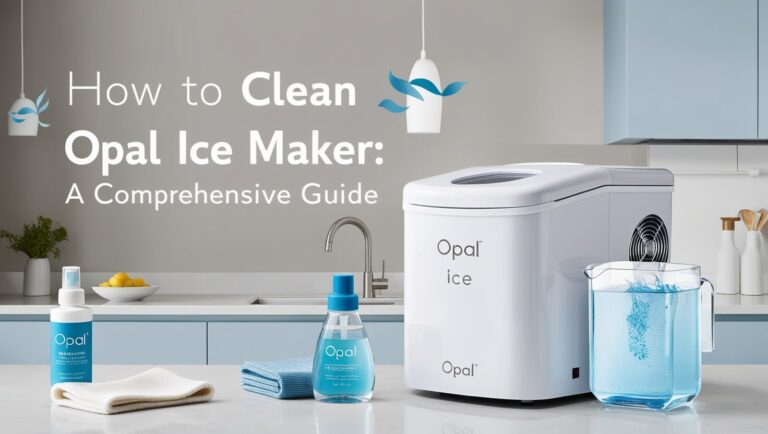How to Clean an Ice Maker: A Complete Guide
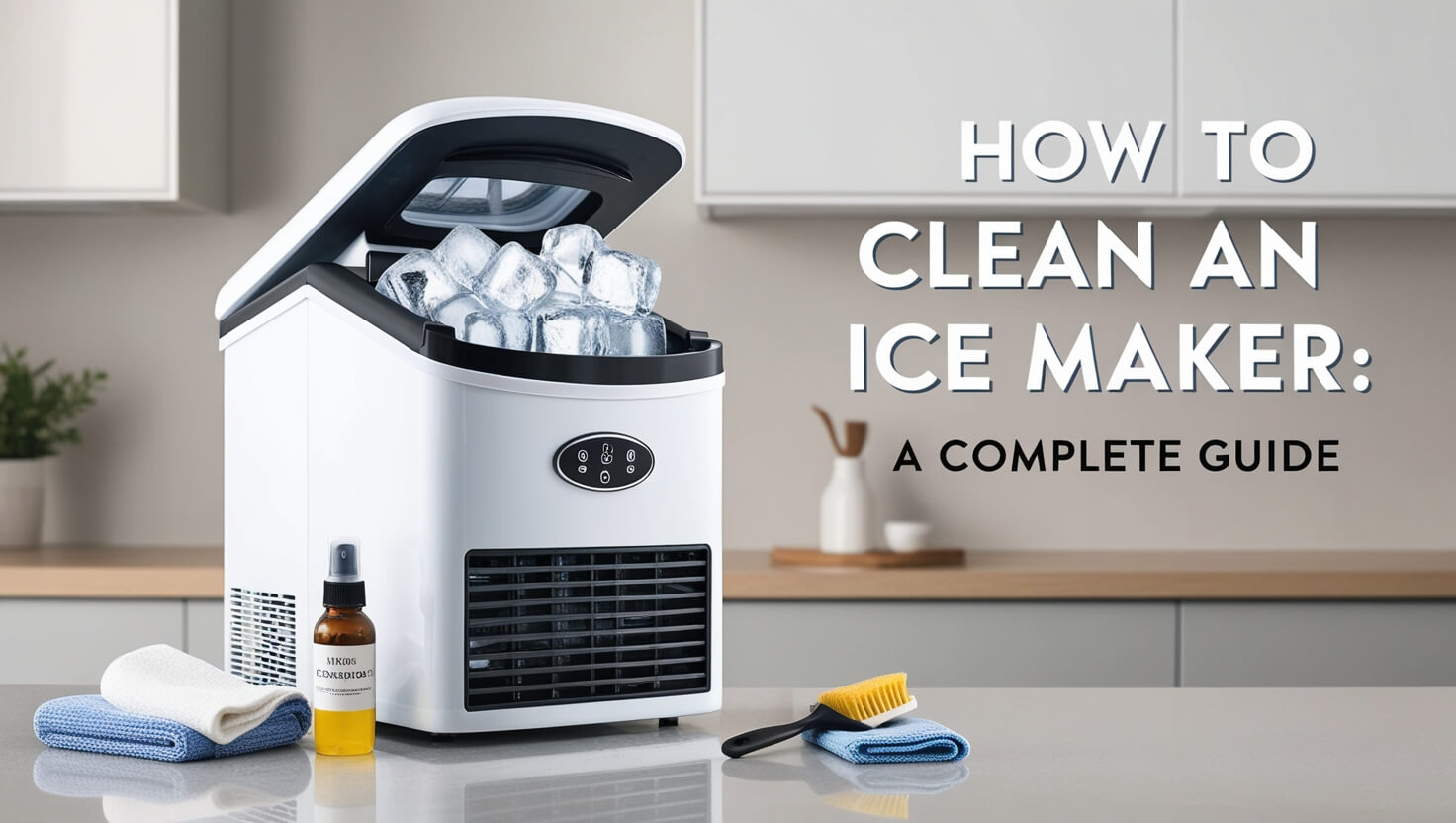
Ice makers are a modern convenience we often take for granted. But like any appliance, they need regular cleaning to function properly. This guide will walk you through how to clean an ice maker, ensuring your drinks stay cool and refreshing.
Cleaning your ice maker is crucial for maintaining ice quality, preventing health issues, and extending your appliance’s lifespan. Whether you have a refrigerator ice maker, a standalone unit, or a commercial machine, we’ve got you covered. Let’s dive into the world of sparkling clean ice makers!
Why Clean Your Ice Maker?
You might wonder why cleaning your ice maker is so important. After all, it’s just frozen water, right? Well, there’s more to it than meets the eye.
Health and Safety Concerns
Ice makers can harbor bacteria, mold, and other microorganisms if not cleaned regularly. These contaminants can make their way into your drinks, potentially causing illness. Regular cleaning ensures your ice remains safe for consumption.
Improved Ice Quality and Taste
Have you ever noticed a funky taste in your ice? That’s often a sign that your ice maker needs cleaning. Mineral buildup, food particles, and even old ice can affect the taste and clarity of new ice. A clean ice maker produces crystal-clear, odor-free ice that enhances your beverages.
Extended Appliance Lifespan
Like any machine, an ice maker functions best when it’s clean. Regular maintenance prevents wear and tear, reduces the risk of breakdowns, and helps your appliance last longer. It’s a simple way to protect your investment and avoid costly repairs or replacements.
Types of Ice Makers and Their Cleaning Needs
Not all ice makers are created equal. Different types have unique cleaning requirements. Let’s explore the main categories:
Refrigerator Ice Makers
These built-in units are convenient but can be tricky to clean due to their location. They often have removable bins and may be connected to your refrigerator’s water filtration system.
Standalone/Countertop Ice Makers
Portable and easy to use, these units require regular cleaning to prevent mineral buildup. They often have visible water reservoirs and removable parts for easy access.
Commercial Ice Machines
Found in restaurants, bars, and hotels, these workhorses need frequent, thorough cleaning to meet health standards. They often have automated cleaning cycles but still require manual attention.
Signs Your Ice Maker Needs Cleaning
How do you know when it’s time to clean your ice maker? Look out for these telltale signs:
Visual Indicators
- Cloudy or discolored ice
- Visible mold or slime in the ice bin or on the machine
- Scale or mineral deposits on surfaces
Taste and Odor Issues
- Ice with a strange taste or smell
- Beverages that taste off when ice is added
Performance Problems
- Slow ice production
- Small or malformed ice cubes
- Ice that melts quickly
If you notice any of these signs, it’s time to give your ice maker some attention.
Preparing to Clean Your Ice Maker
Before you start scrubbing, gather your supplies and take some safety precautions.
Gathering Necessary Supplies
You’ll need:
- Warm water
- Mild dish soap
- White vinegar
- Clean cloths or sponges
- A soft brush (like an old toothbrush)
- Ice maker cleaner (optional)
Safety Precautions
Always prioritize safety when cleaning appliances:
- Unplug the unit or turn off the power supply
- Wear gloves to protect your hands
- Ensure proper ventilation if using cleaning products
Turning Off and Unplugging the Appliance
This step is crucial for your safety and to prevent damage to the machine. For built-in refrigerator units, you may need to turn off the ice maker function and unplug the refrigerator.
Step-by-Step Guide: Cleaning a Refrigerator Ice Maker
Now, let’s walk through the process of cleaning a refrigerator ice maker.
Removing and Cleaning the Ice Bin
- Take out the ice bin and dispose of any remaining ice.
- Wash the bin with warm, soapy water.
- Rinse thoroughly and dry with a clean cloth.
Cleaning the Ice Maker Mechanism
- Wipe down the ice maker’s exterior with a damp cloth.
- Use a solution of warm water and vinegar (1:1 ratio) to clean hard-to-reach areas.
- For stubborn spots, use a soft brush dipped in the cleaning solution.
Sanitizing the System
- Mix a sanitizing solution of 1 tablespoon bleach per gallon of water.
- Wipe all surfaces with this solution.
- Rinse thoroughly with clean water.
- Dry all surfaces completely.
Remember to run and discard several batches of ice after cleaning to flush the system.
Cleaning a Standalone/Countertop Ice Maker
Portable ice makers require a slightly different approach.
Draining the Water Reservoir
- Turn off and unplug the unit.
- Remove any ice from the storage bin.
- Drain all water from the reservoir.
Cleaning Removable Parts
- Take out any removable parts like ice scoops or water lines.
- Wash these parts with warm, soapy water.
- Rinse and dry thoroughly.
Sanitizing the Interior
- Wipe down the interior with a vinegar solution (1:1 vinegar to water).
- For tough stains, use a soft brush.
- Rinse with clean water and dry completely.
Maintaining Commercial Ice Machines
Commercial ice makers require more frequent and thorough cleaning due to their high usage.
Daily Cleaning Routines
- Remove and sanitize the ice scoop.
- Wipe down exterior surfaces.
- Check for any signs of mold or slime.
Weekly Deep Cleaning Process
- Turn off the machine and remove all ice.
- Disassemble removable parts.
- Clean all parts with a manufacturer-approved cleaner.
- Sanitize all surfaces.
- Reassemble and run several cycles, discarding the ice.
Professional Maintenance Considerations
Consider hiring a professional for bi-annual deep cleaning and maintenance checks. They can:
- Clean hard-to-reach components
- Check for mechanical issues
- Ensure the machine meets health code standards
Natural Cleaning Solutions for Ice Makers
If you prefer eco-friendly options, try these natural cleaning methods.
Vinegar-Based Cleaning Methods
White vinegar is a powerful, natural cleaner:
- Mix equal parts water and white vinegar.
- Use this solution to clean all surfaces.
- For tough buildup, let the solution sit for 10-15 minutes before wiping.
Lemon Juice as a Natural Disinfectant
Lemon juice can leave your ice maker fresh and clean:
- Mix 1 part lemon juice with 3 parts water.
- Use this solution to wipe down surfaces.
- The citric acid helps break down mineral deposits.
Baking Soda for Odor Removal
Baking soda is great for eliminating odors:
- Make a paste with baking soda and water.
- Apply to smelly areas and let sit for 10 minutes.
- Wipe clean and rinse thoroughly.
Dealing with Mineral Buildup and Scale
Hard water can lead to mineral buildup in your ice maker.
Identifying Hard Water Issues
Signs of hard water include:
- Cloudy ice cubes
- White, chalky residue on surfaces
- Slow ice production
Descaling Techniques
To remove scale:
- Mix a solution of equal parts water and white vinegar.
- Run this solution through the ice maker’s system.
- Let it sit for an hour, then flush with clean water.
Preventing Future Buildup
- Use filtered water in your ice maker.
- Consider installing a water softener for your home.
- Clean your ice maker more frequently if you have hard water.
Troubleshooting Common Ice Maker Cleaning Problems
Even with regular cleaning, you might encounter some issues.
Stubborn Stains and Residue
For tough stains:
- Make a paste of baking soda and water.
- Apply to the stain and let sit for 15 minutes.
- Scrub gently with a soft brush.
- Rinse thoroughly.
Persistent Odors
If odors linger:
- Place a bowl of activated charcoal in the ice bin overnight.
- For refrigerator units, check if the odor is coming from other foods.
Mechanical Issues Post-Cleaning
If your ice maker isn’t working properly after cleaning:
- Ensure all parts are correctly reassembled.
- Check that the water line isn’t kinked or frozen.
- Make sure the unit is level.
Maintaining a Clean Ice Maker
Regular maintenance is key to keeping your ice maker in top shape.
Regular Cleaning Schedule
- Clean your ice maker every 3-6 months.
- For commercial units, follow daily and weekly cleaning routines.
- Adjust your schedule based on usage and water quality.
Daily Habits for Cleaner Ice
- Use clean hands or a scoop to handle ice.
- Keep the ice bin closed when not in use.
- Dispose of old ice regularly.
Water Filtration Options
Consider installing a water filter to improve ice quality:
- Inline water filters can be attached to your ice maker’s water line.
- Whole-house filtration systems can benefit all your appliances.
When to Seek Professional Help
Sometimes, it’s best to call in the experts.
Signs of Serious Issues
Seek professional help if you notice:
- Persistent bad odors or tastes
- Visible mold that returns after cleaning
- Mechanical problems like strange noises or leaks
Benefits of Professional Cleaning Services
Professional cleaners can:
- Access hard-to-reach components
- Use specialized cleaning tools and products
- Identify potential mechanical issues early
Repair vs. Replacement Considerations
If your ice maker is old or frequently malfunctioning, weigh the costs of repair against replacement. A professional can help you make this decision.
Ice Maker Cleaning FAQs
Let’s address some common questions about cleaning ice makers.
How often should I clean my ice maker?
Clean your home ice maker every 3-6 months. Commercial units need daily attention and weekly deep cleans.
What are safe cleaning products for ice makers?
Use mild dish soap, white vinegar, or specialized ice maker cleaners. Avoid harsh chemicals that could contaminate your ice.
How do I address mold growth in my ice maker?
- Dispose of all ice and removable parts.
- Clean thoroughly with a vinegar solution or diluted bleach.
- Dry completely before reassembling.
- Run several cycles, discarding the ice, before using.
Can I use bleach to clean my ice maker?
Yes, but use it sparingly. Mix 1 tablespoon of bleach per gallon of water. Always rinse thoroughly and run several cycles before using the ice.
How do I clean the water line to my ice maker?
- Turn off the water supply.
- Disconnect the water line.
- Flush it with a vinegar solution.
- Rinse with clean water before reconnecting.
Why is my ice maker producing cloudy ice?
Cloudy ice often results from mineral buildup or air bubbles. Regular cleaning and using filtered water can help.
How can I prevent odors in my ice maker?
Keep your freezer clean, use airtight containers for strong-smelling foods, and clean your ice maker regularly.
Is it normal for ice to have a taste?
No, ice should be tasteless. If you notice a flavor, it’s time to clean your ice maker.
Can I use hot water to clean my ice maker?
It’s best to use warm water. Hot water can damage some plastic components.
How do I clean the condenser coils on my ice maker?
Use a vacuum with a brush attachment or a coil cleaning brush. Be gentle to avoid damaging the coils.
In Closing
Keeping your ice maker clean is essential for great-tasting drinks, appliance longevity, and your health. By following this guide on how to clean an ice maker, you’ll ensure your machine produces crystal-clear, odor-free ice for years to come.
Remember, regular maintenance is key. Set a cleaning schedule and stick to it. Pay attention to signs that your ice maker needs attention, and don’t hesitate to seek professional help for tough issues.
With these tips and techniques, you’re well-equipped to tackle ice maker cleaning like a pro. Here’s to clean ice makers and refreshing drinks!

